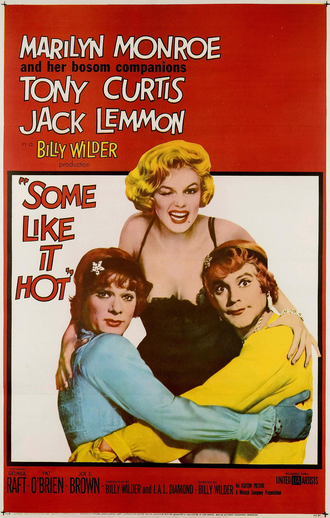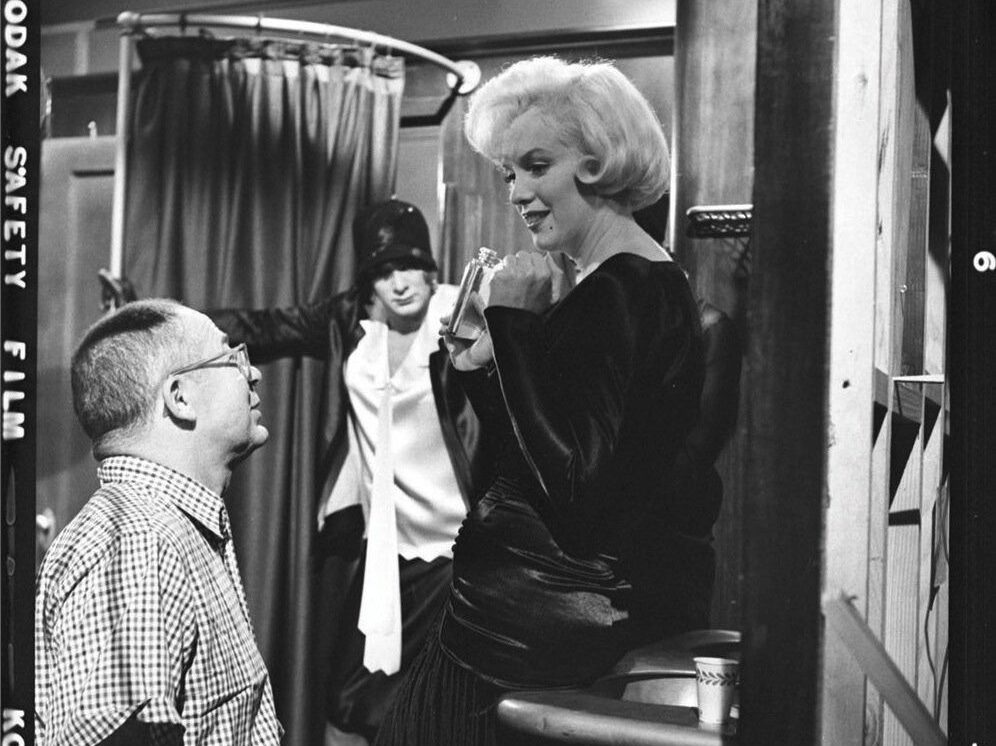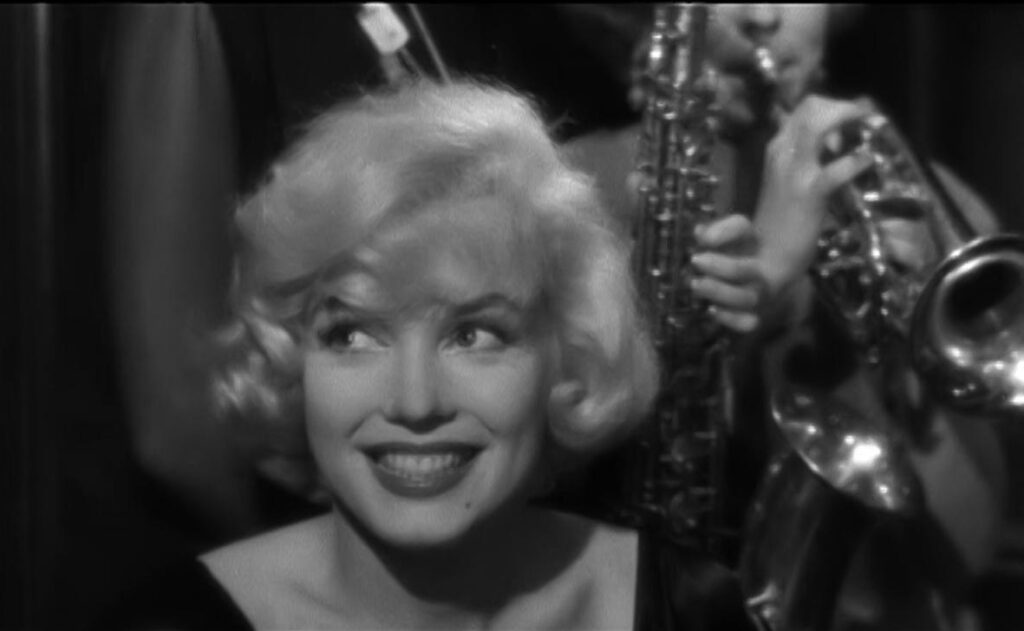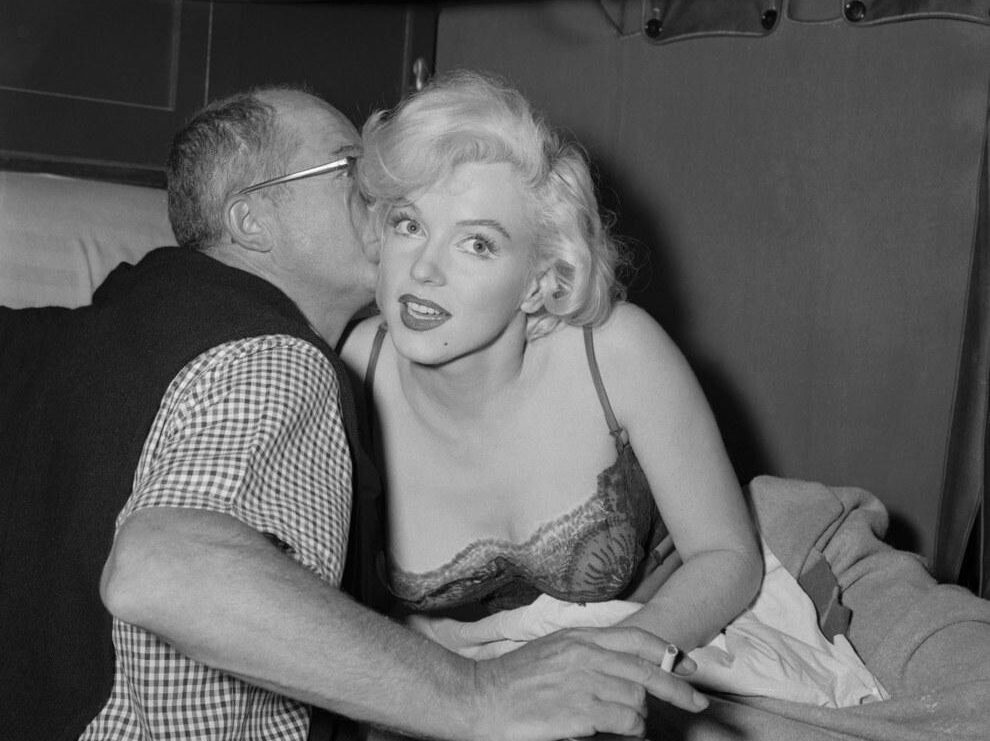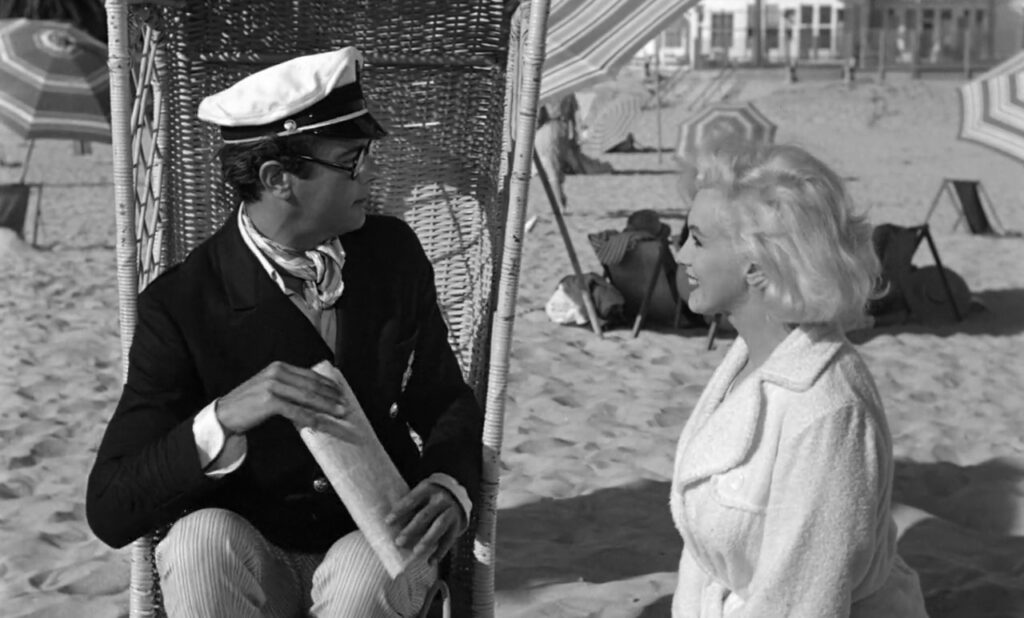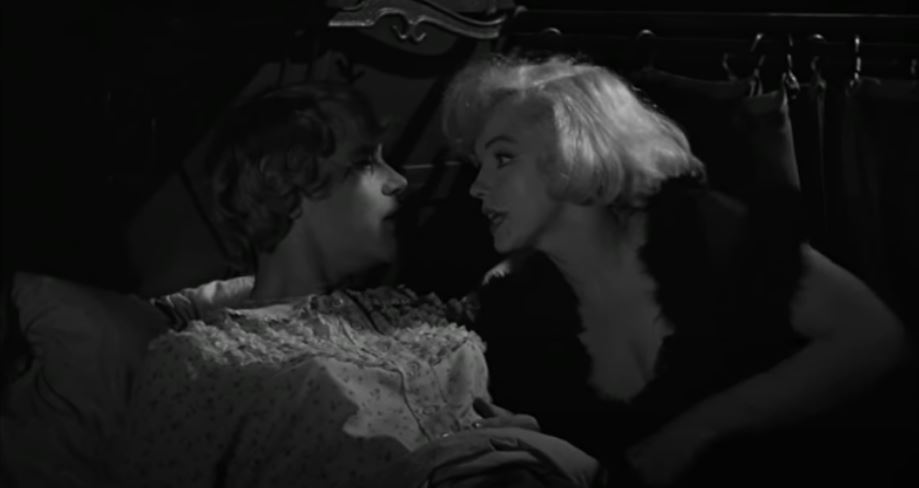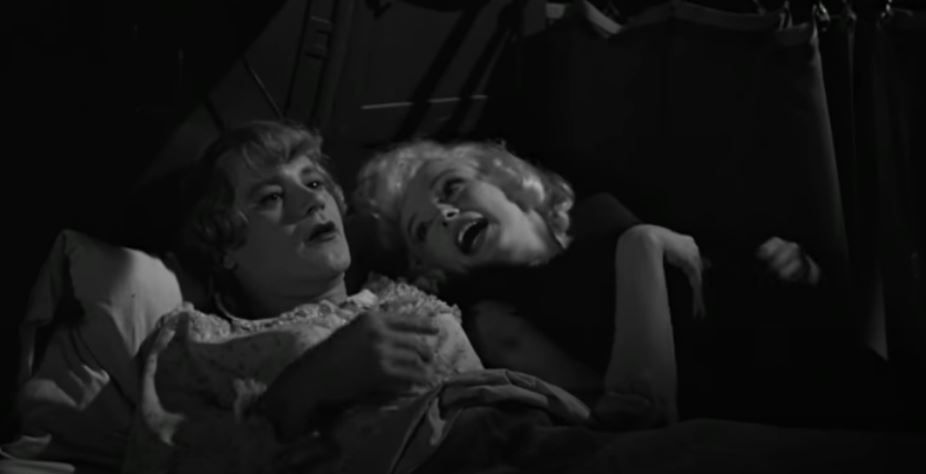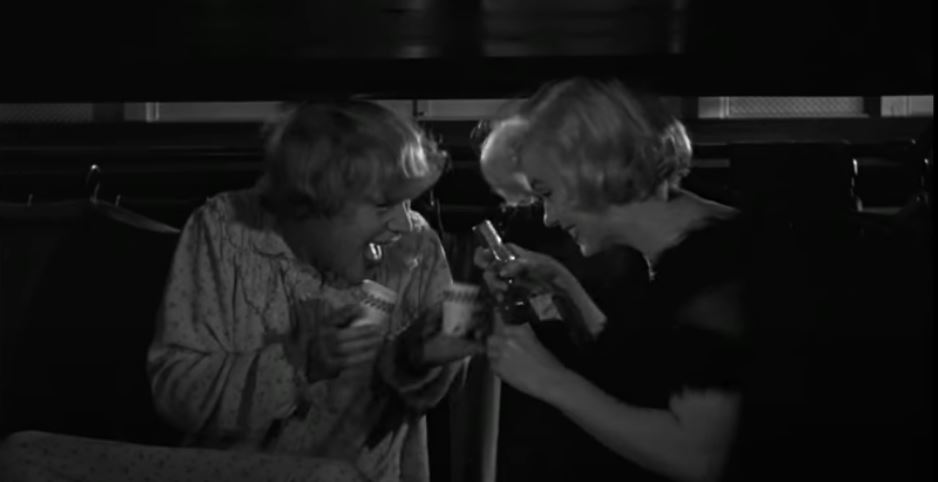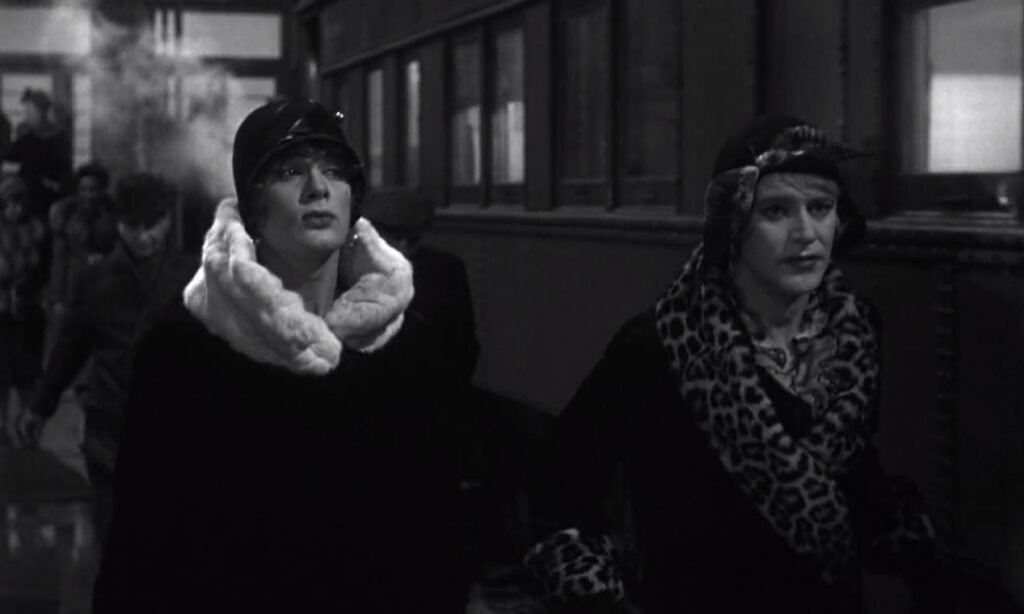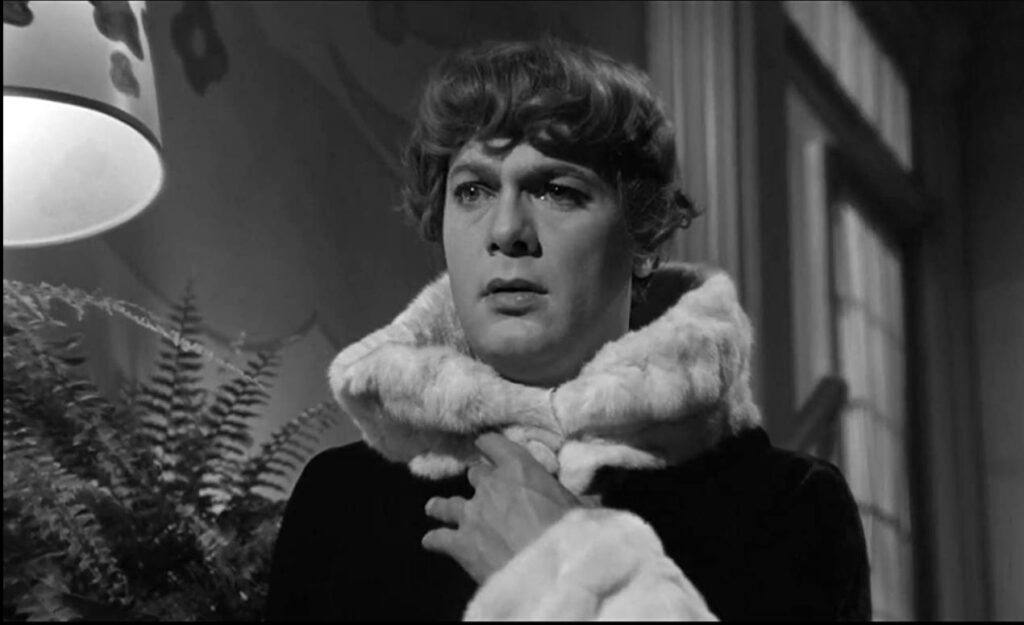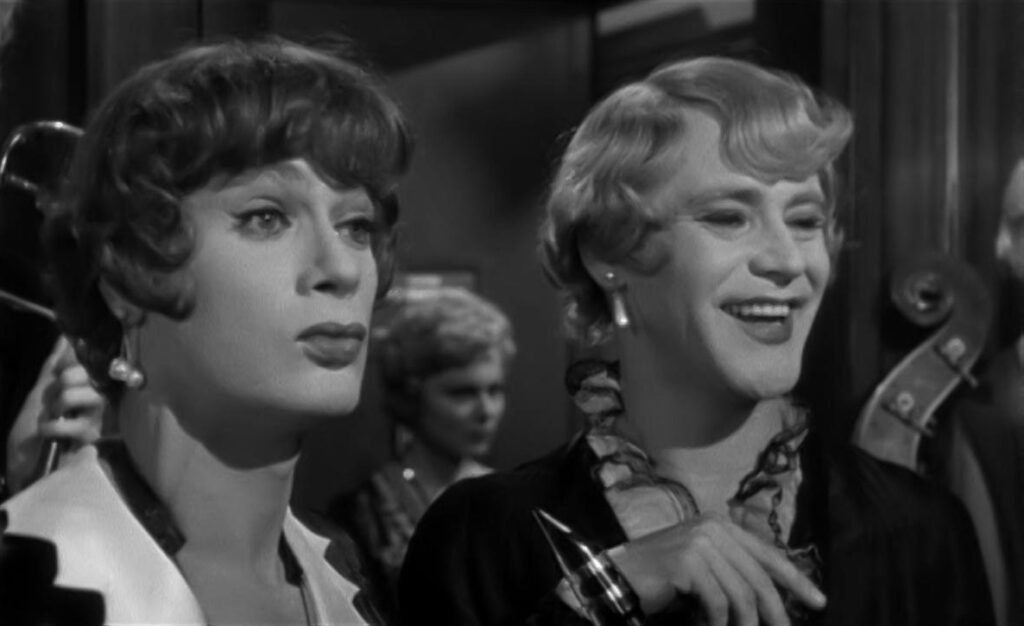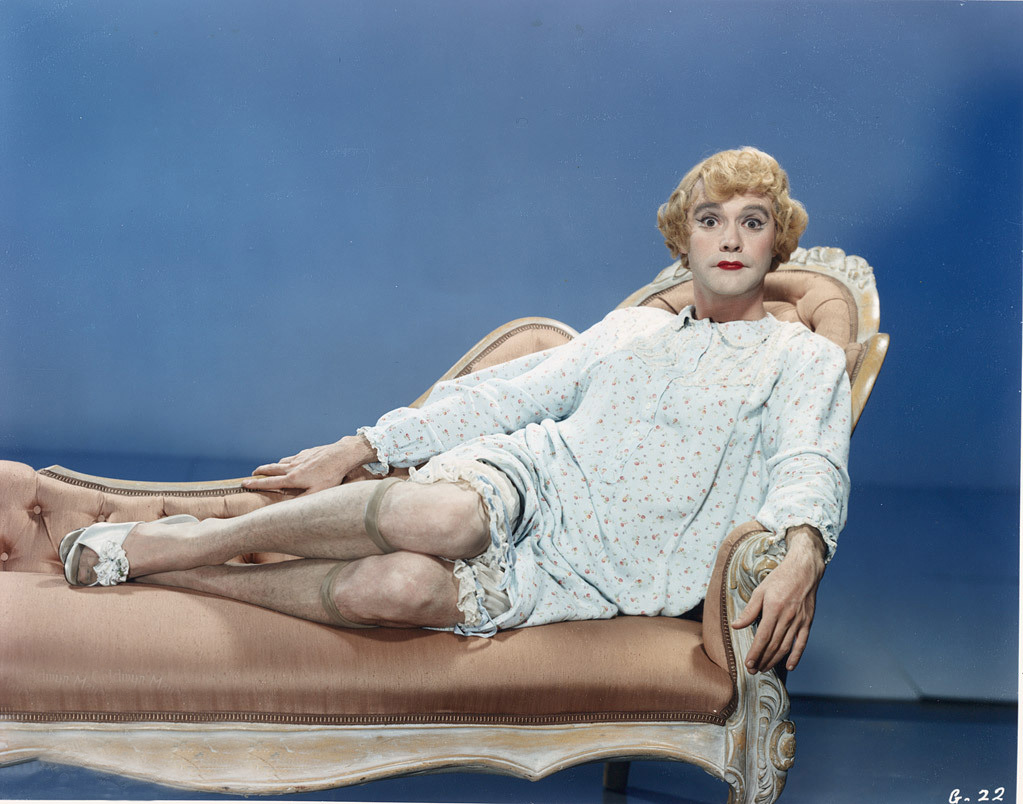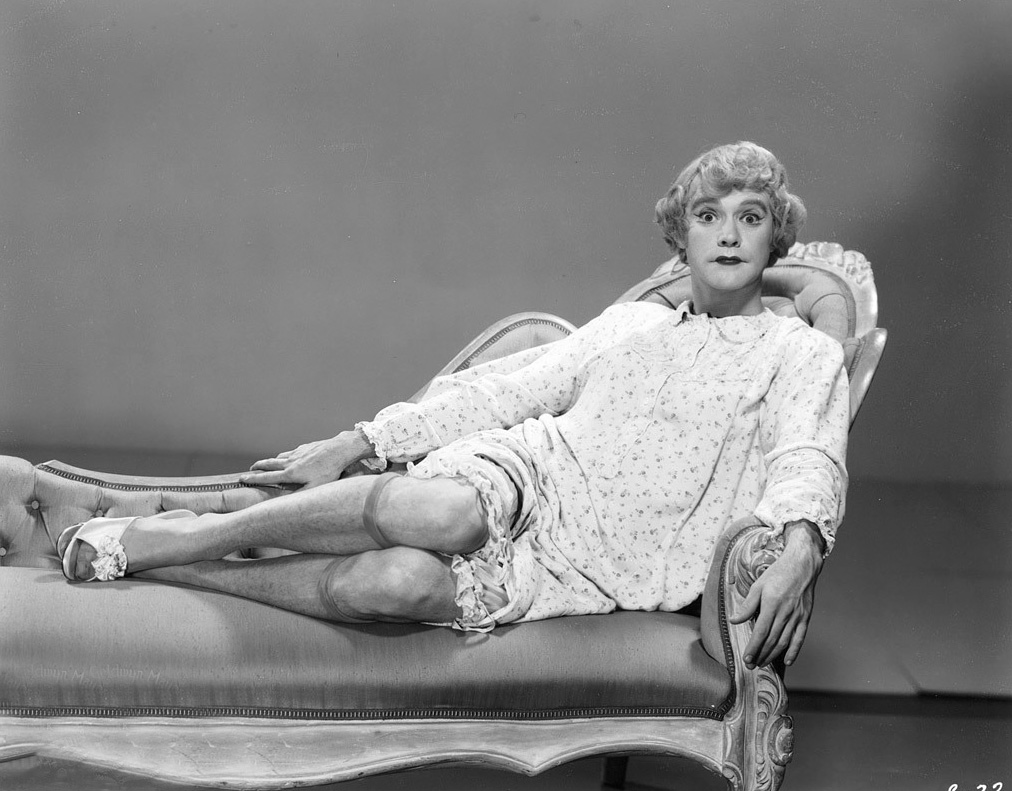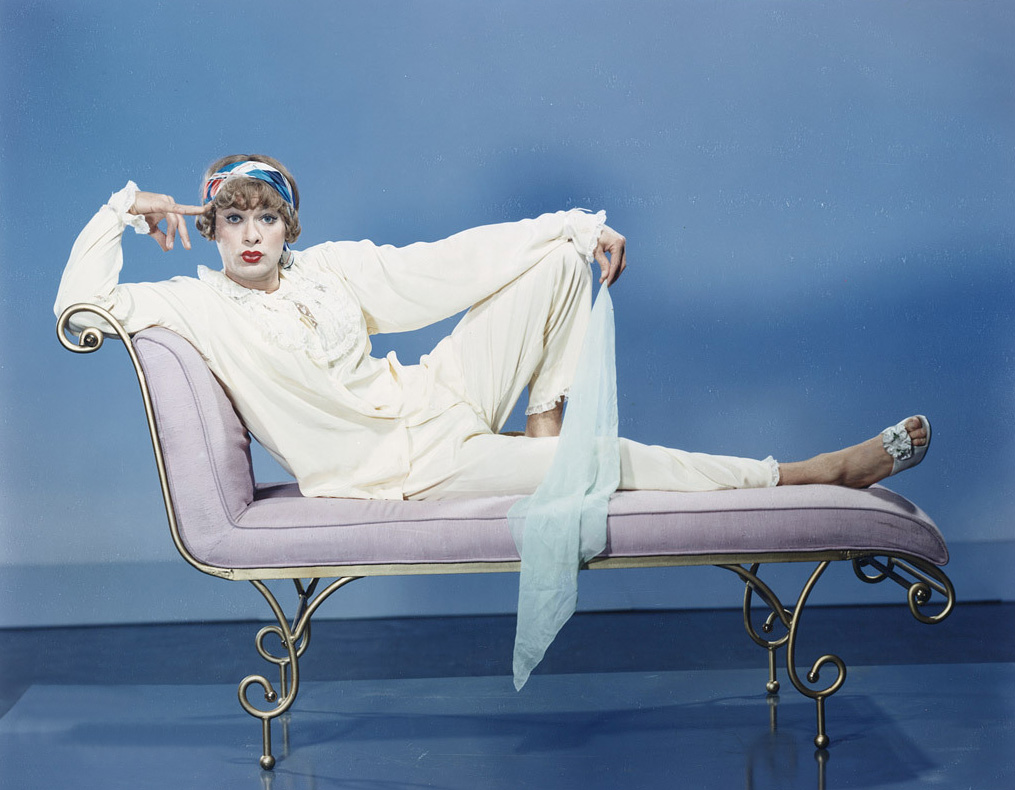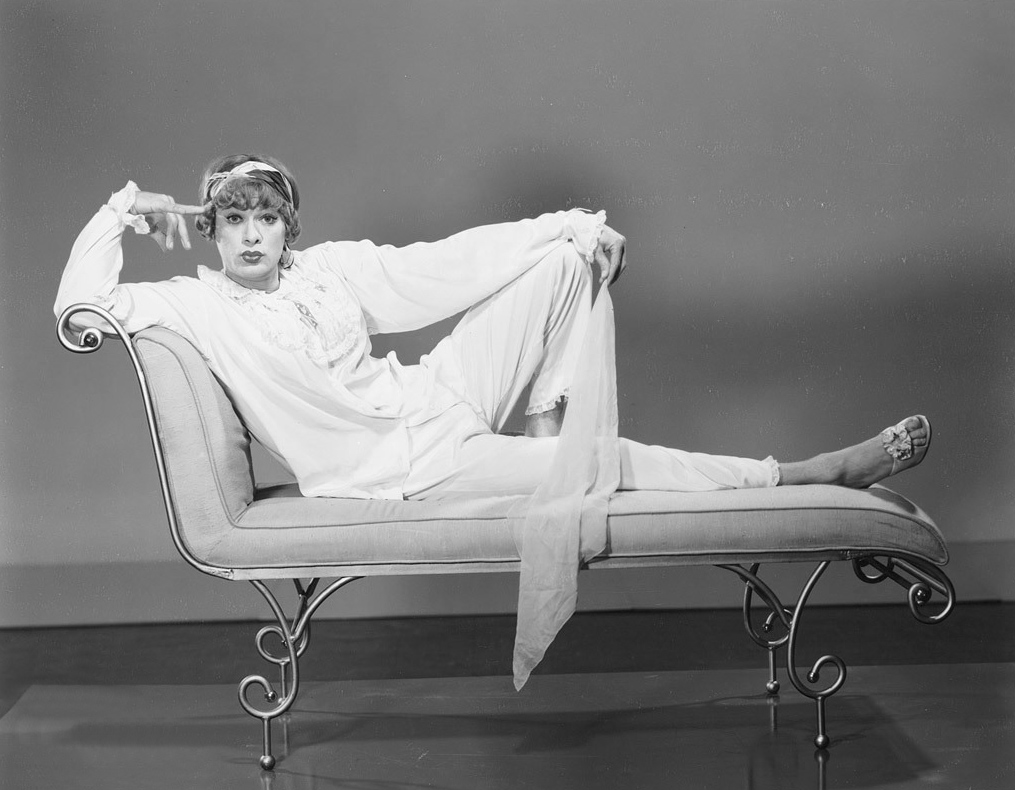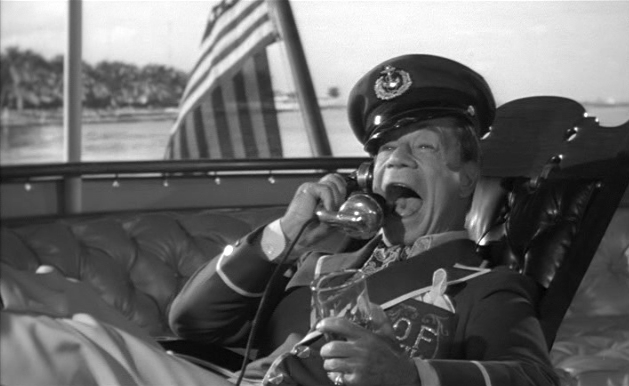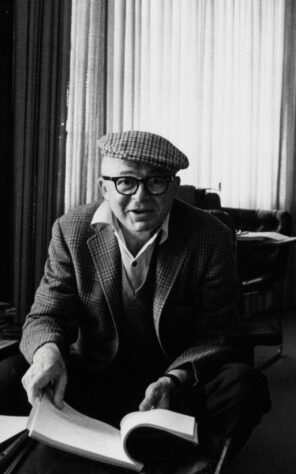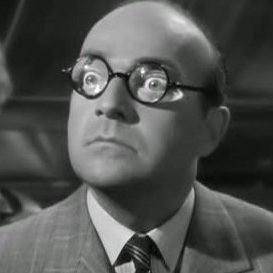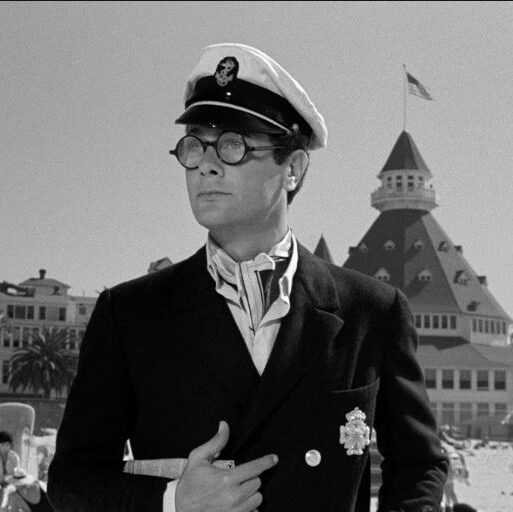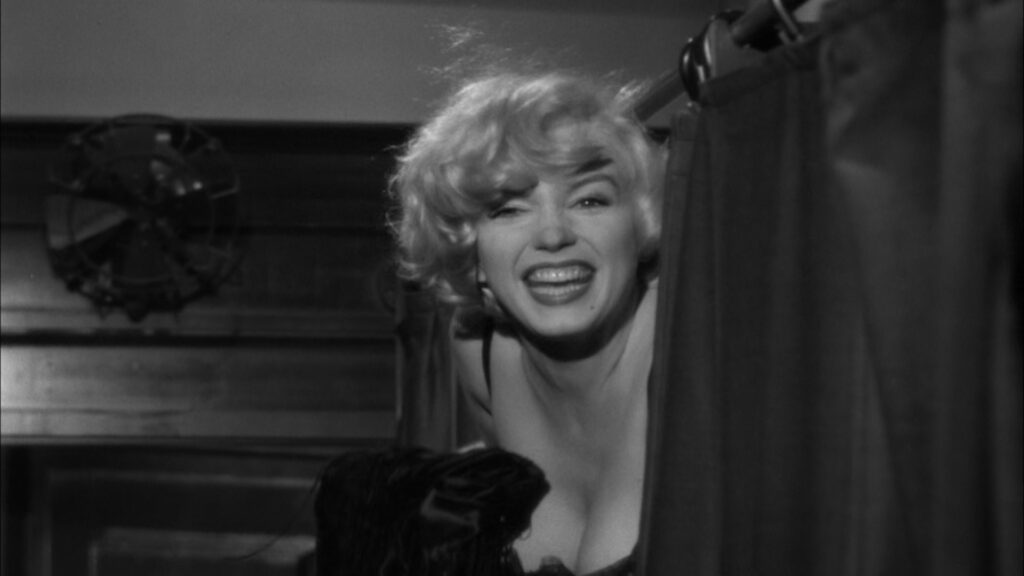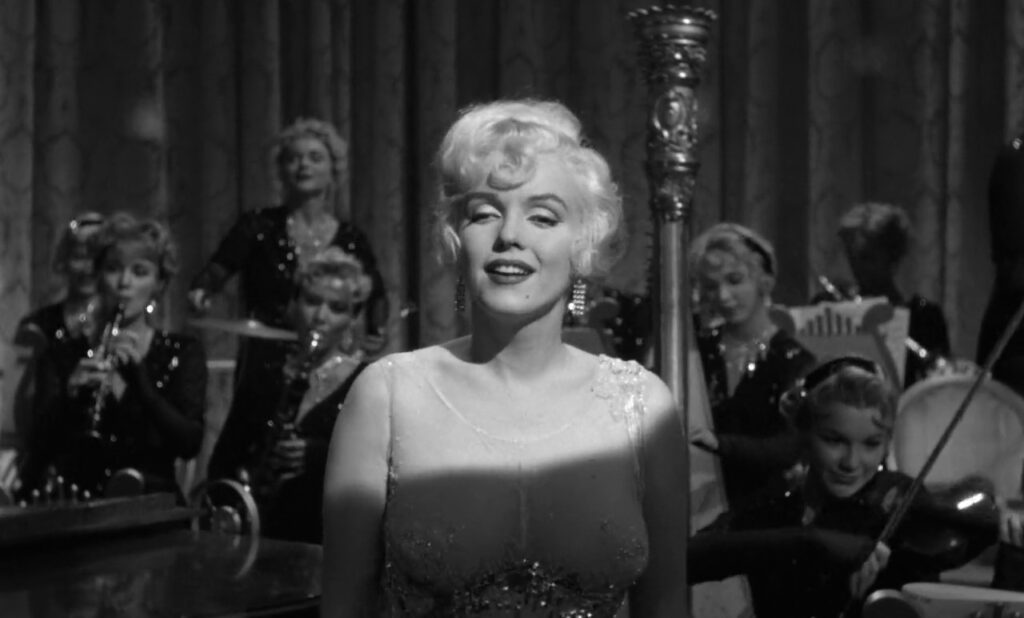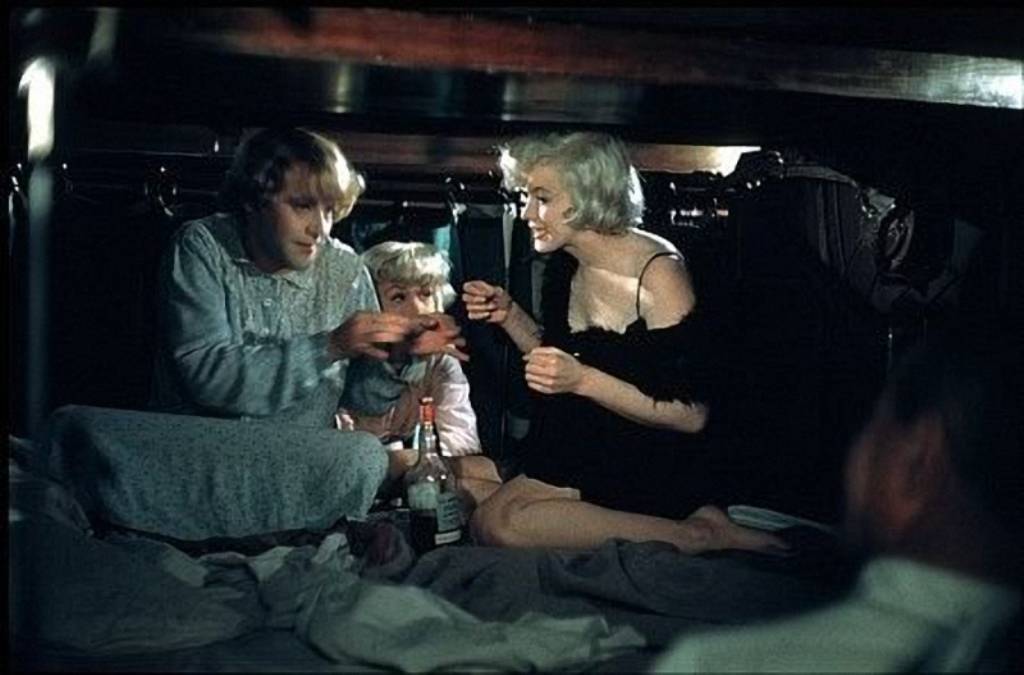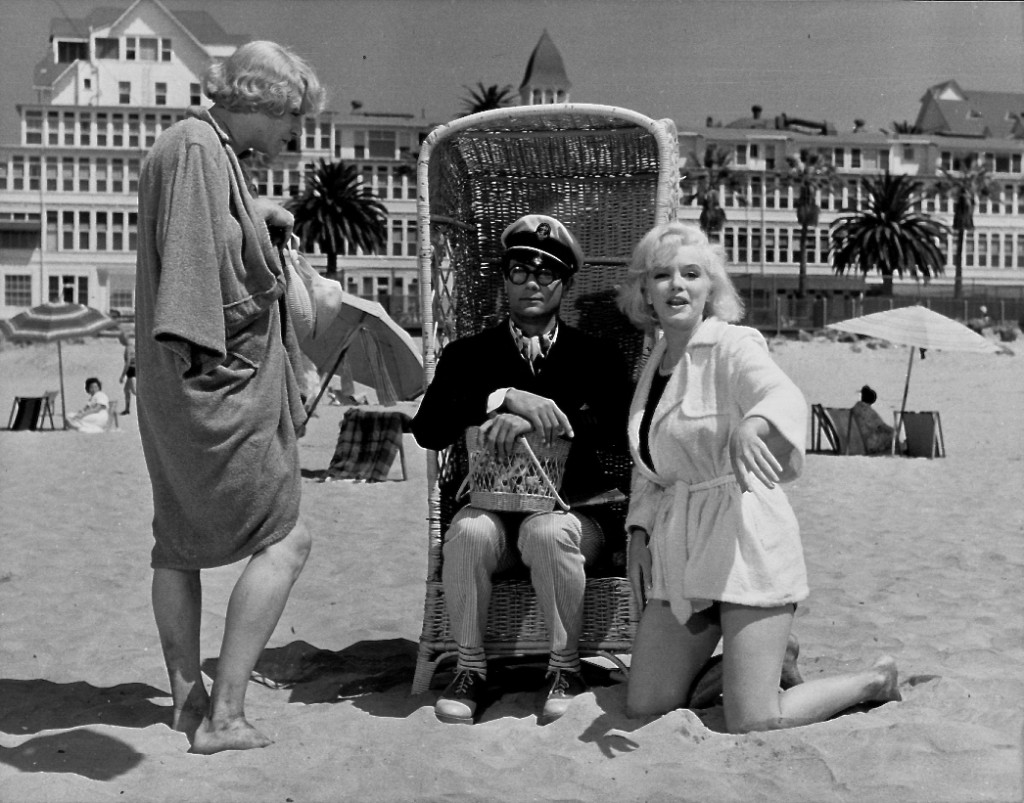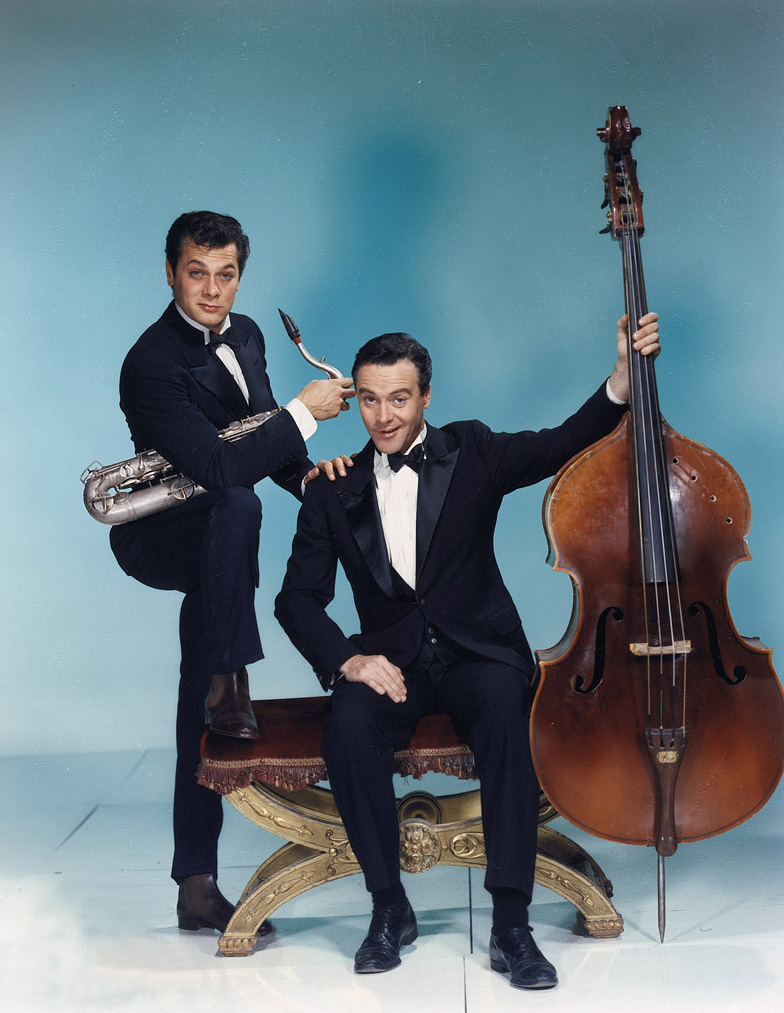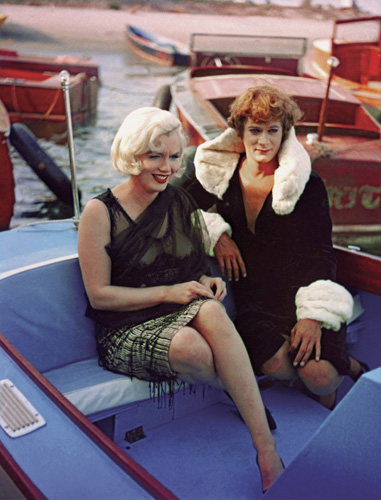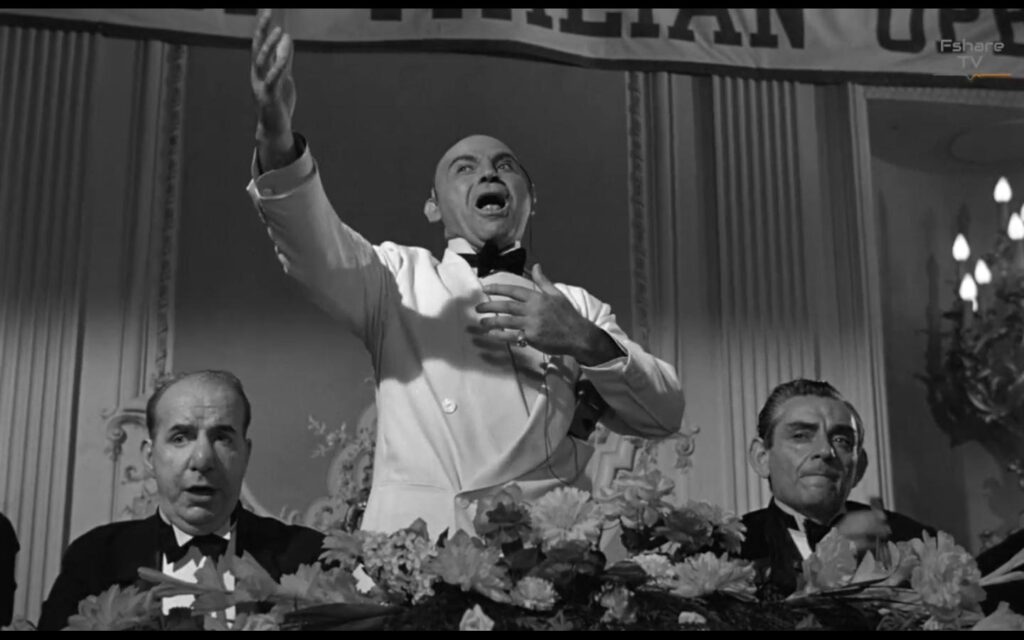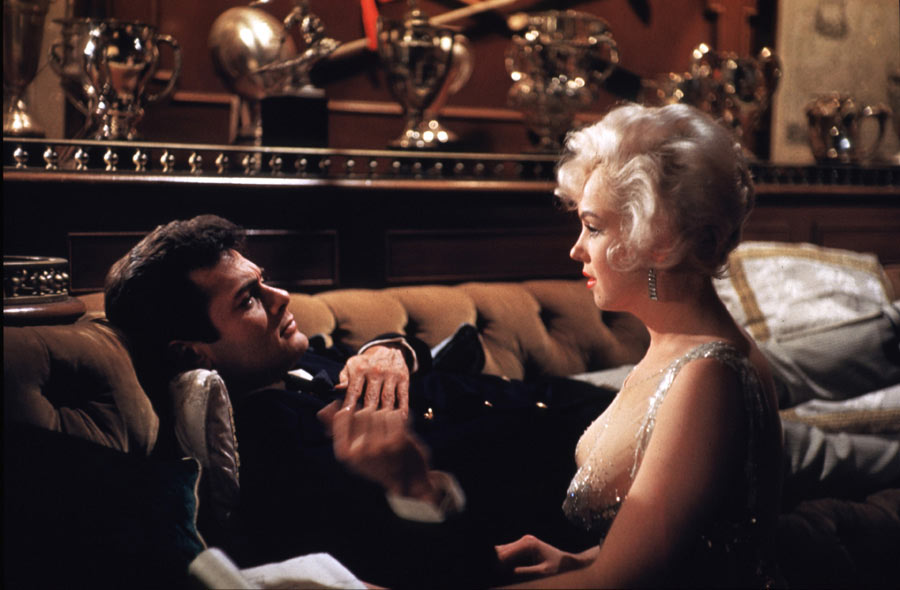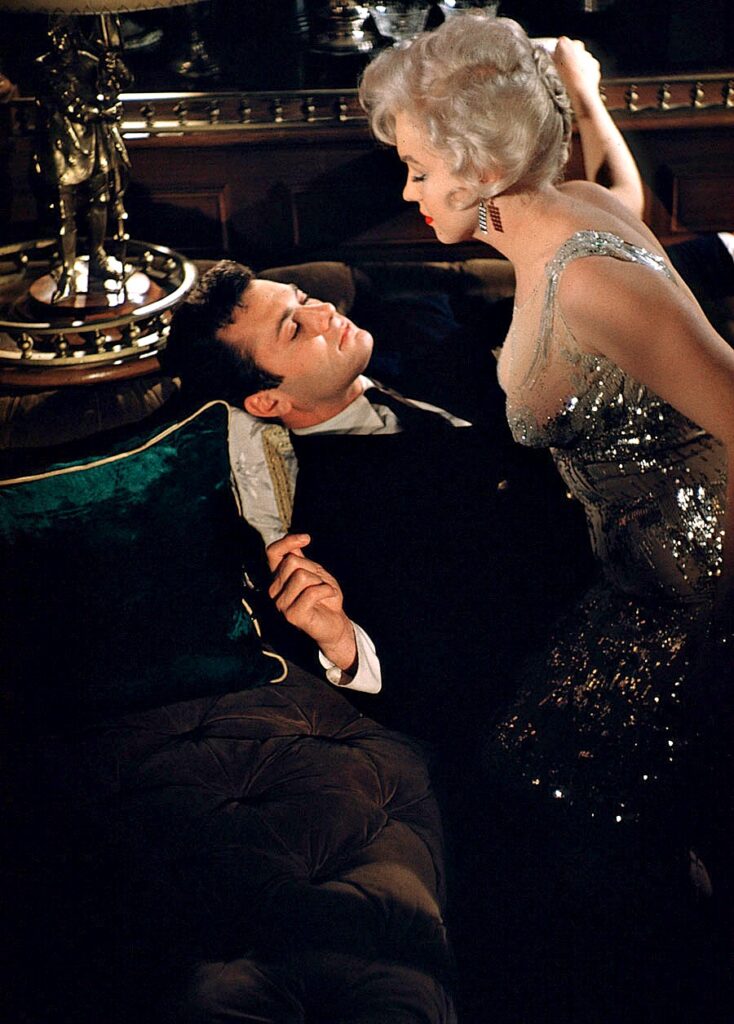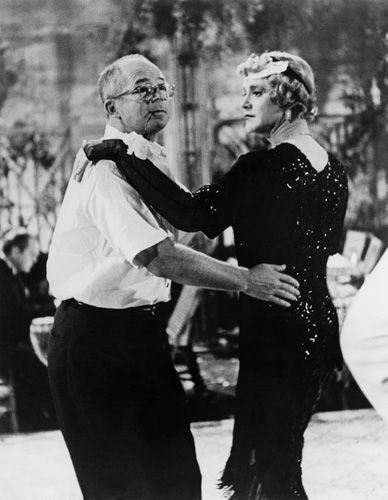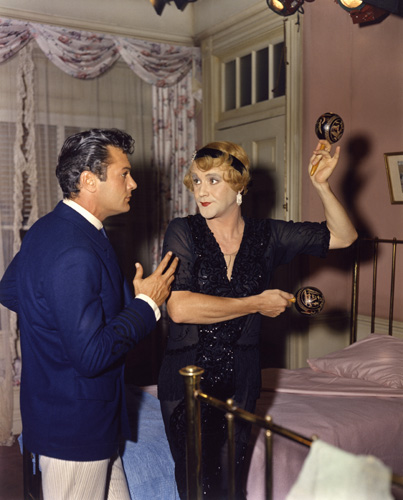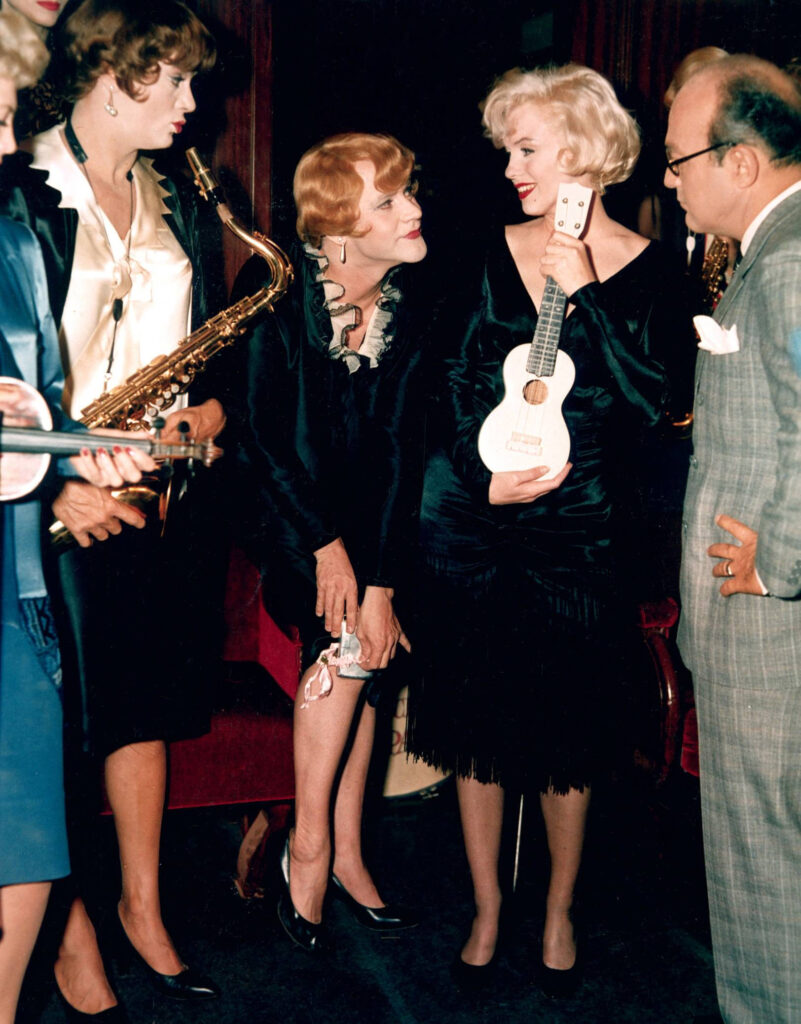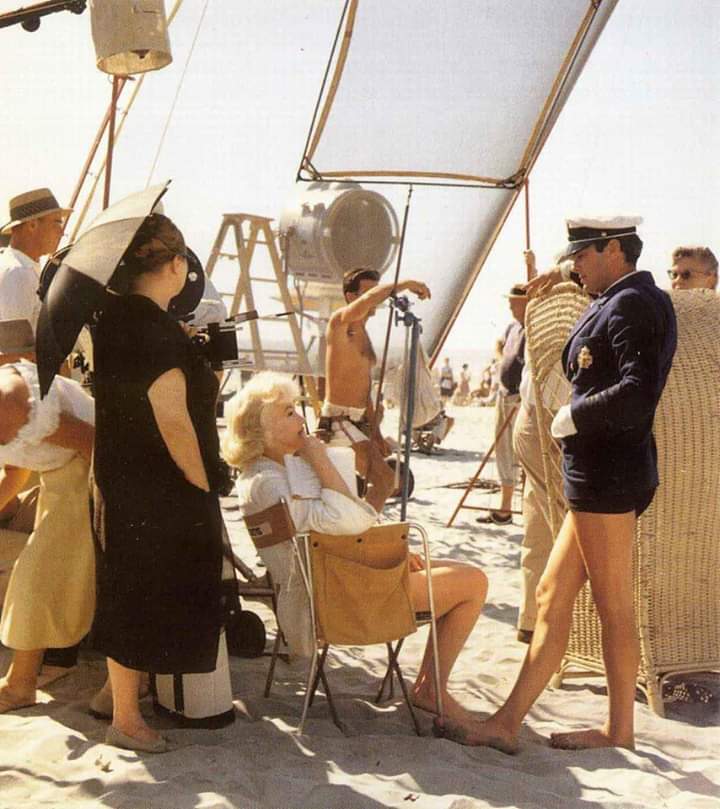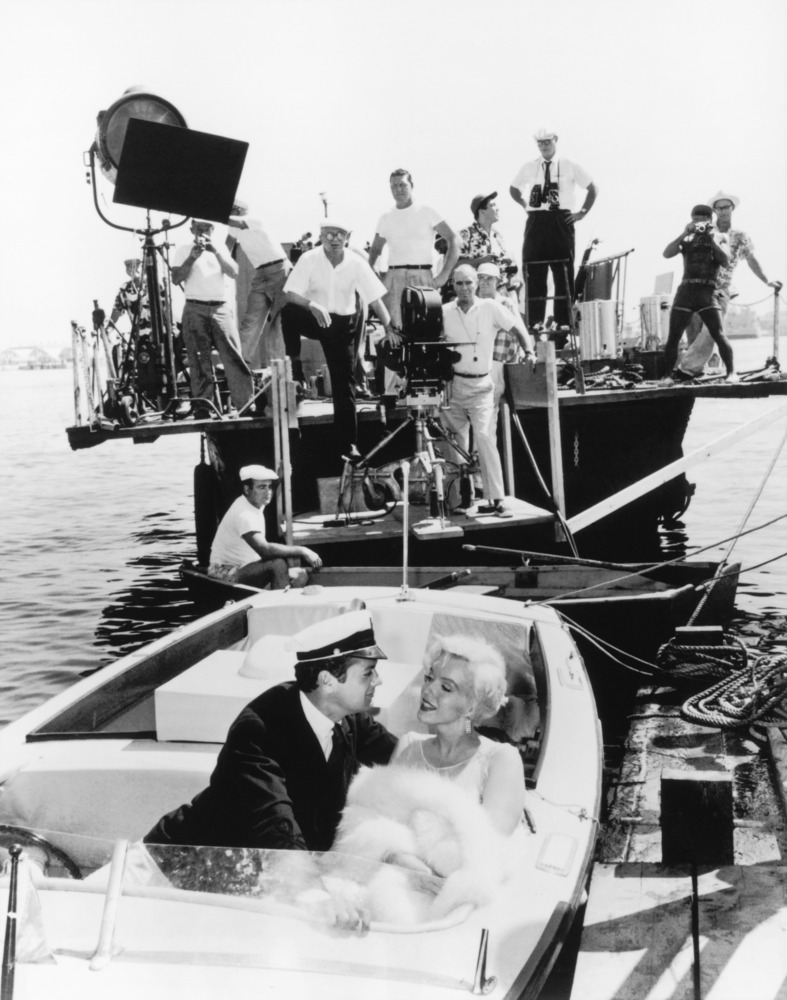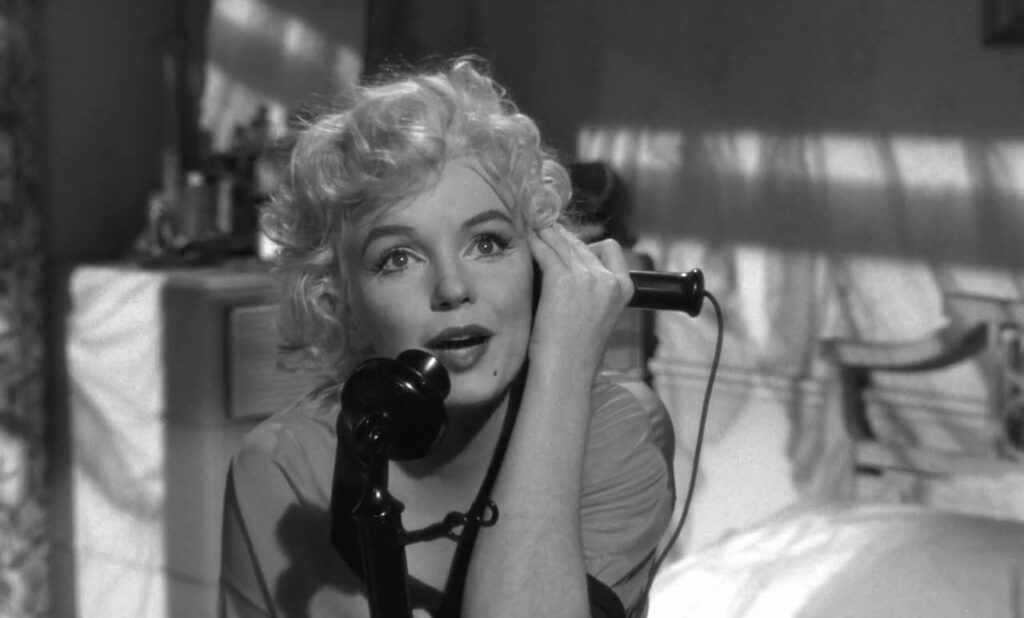
Flawless
Some Like it Hot (1959) is widely considered to be the greatest screen comedy of all time. Yet before its release that would have been hard to imagine.
The film was swarmed by controversy including worries about homosexuality, cross dressing, and sexuality.
America has grown up quite a lot since then, and today it’s hard for us to imagine that so many people got so uptight.
Performances
Some Like it Hot features stellar performances from literally the entire cast including George Raft, Joe E. Brown, Pat O’Brien, Nehemiah Persoff (still with us at the age of 101,) Beverly Wills, Mike Mazurki and Harry Wilson. All are just as fresh today as they were 61 years ago in 1959, but it’s clearly Marilyn Monroe, Jack Lemmon and Tony Curtis who reach the greatest heights.
Marilyn Monroe
Wilder directed Monroe in The Seven Year Itch and faced all the same backstage drama Monroe was so famous for. He vowed to never work with her again, but he knew how perfect she was for the role. He endured the same trauma again, but crafted with her what is arguably her finest performance. Sugar could have been portrayed as a troubled woman out to get herself a rich husband. Monroe made her adorable, soft, and vulnerable. Almost anyone could identify with her. She became a real person through Monroe’s performance. As hard as it is to believe, it’s Sugar’s personality that makes her so attractive to the audience, and everybody loved her.
Jack Lemmon
Jack Lemmon was not to be outdone. Jerry/Daphne struggles more with the intricacies of masquerading as a woman. A loveable flirt, Jerry finds it difficult to resist the temptations of being in an all girl band. In one incredible scene Lemmon, as Daphne, is in a top bunk of a sleeper car with Monroe.
As the scene progresses, Jerry has to continually worry that he will be discovered. At one point Sugar discovers Daphne’s feet are cold and begins rubbing them with her own. The shear agony he suffers is priceless as he has to keep reminding himself that “I’m a girl.” The scenario continues to devolve as the other girls join the party while he continually worries about discovery. When one of the girls drops icce down his back he can contain it no more and pulls the train’s emergency brake, spilling everyone out of the bunk. The scene is filled with sexual innuendo–and it’s hilarious.
Tony Curtis
Tony Curtis as Joe/Josephine suffers the dichotomy of being the male romantic lead while dressing as a woman. But it’s Joe that has a much easier time mimicking women, though he never quite gets it right–and it’s hilarious as well. Prepare to laugh hard the first time you see Lemmon and Curtis as Daphne and Josephine. The way Curtis purses his lips (almost like a duck face) and holds his nose in the air as he walks is a sight to behold. Curtis contrasts Lemmon by being much more conscientious of why they are there. While Daphne struggles with temptation near the brink of ruin, Joe handles his much more rationally and cunningly. While Jerry is prone to losing his head, Joe keeps his. It’s also Joe that has the biggest character transition, from a reckless gambler, womanizer and self described “no-goodnick” to a much more caring person.
Make-up
One Important thing Wilder had to alter was shooting the film in Black and White rather than in color. Makeup tests for Some Like it Hot it revealed that Lemmon’s and Curtis’s makeup was garrish to say the least. He couldn’t have the distraction in the film, so he got Monroe to agree to not shoot in color. (Monroe had a contract clause that all her films were to be in color.)
Latter Day Screwball Comedy
Curtis and Monroe
Tony Curtis as “Cary Grant” and Monroe. This clip demonstrates Monroe’s performance particularly well. Whenever asked, Grant always feigned anger and said in perfect Curtis exaggerated style “I don’t talk like that!” He secretly loved it.
Some Like it Hot shares many of the same qualities as a 1930’s Screwball comedy. Fast paced (accentuated here by the Jazz musical score,) farcical situations, disguise, and the central element of Screwball: A comedic spoofing of love.
The undisputed King of Screwball was Cary Grant. He shows up here–in the form of Tony Curtis doing an unmistakable impression of Grant’s voice while Joe is masquerading as a millionaire to pursue Sugar. It’s one of the best scenes.
Jack Lemmon and Joe E. Brown
The far more Screwball comedy romance story line in Some Like it Hot is between Osgood Fielding III (Joe E. Brown) and Daphne (Lemmon). While the Joe/Sugar line comes closer to a traditional romance plotline, here “a comedic spoofing of love” could not be more in force.
Aging millionaire playboy Osgood has the eye for Daphne from the start. Daphne eventually agrees to date him so that Joe can use Osgood’s yacht to woo Sugar.
Osgood and Daphne have a whirlwind night, at the end of which Daphne finds him/herself engaged, to his delight. Joe asks “Why would a guy want to marry a guy?” “Security!” replies Jerry/Daphne. The Osgood/Daphne romance also provides one of the single best end lines in movie history (more on this later.)
Billy Wilder does it again
Billy Wilder is one of the most creatively successful filmmakers of all time. While some of his films, like Ace in the Hole (1951,) were financial flops, it was rare for Wilder to have an artistic flop.
The list of his greatest artistic accomplishments are too numerous to mention, but include Double Indemnity (1944) The Lost Weekend (1945) Sunset Boulevard (1950) Sabrina (1954) Stalag 17 (1953) The Seven Year Itch (1955) and The Apartment (1960.)
In Some Like it Hot he crafted a true masterpiece that may very well never age one single day. Laugh after laugh comes while never seeming forced or archaic. That’s because Wilder understood that comedy comes from the characters and their needs, desires and objectives.
Wilder keeps the laughs coming. Some obvious, some subtle, and some almost subliminal. He always found the right amount of timing and delivery for each one so that the audience is laughing but not distracted from the story.
Subliminal Comedy
On the “almost subliminal” level, Wilder filled the movie with little comical touches that provided big laughs and small, and always with the right tone for the moment:
Some little touches
- Who would have thought a closeup of a pair of legs with high heels pushing a wheelchair would get laughs. It does here.
- George Raft who played the main villain had a iconic scene in Scarface (1932) in which his wiseguy character continually flips a coin. Here, Raft comes upon Edward G. Robinson Jr. doing the same thing. He just looks him up and down and is on his way. Again, who would have thought that would be a laugh.
- In the 1931 film The Public Enemy, James Cagney shoves a grapefruit into the face of Mae Clarke when she starts wising off to him. Here, at the gangster banquet, Mike Mazurki makes a dumb comment. Raft immediately goes for a nearby grapefruit.
- At one point while talking to “Shell Oil/Cary Grant” for the first time, Sugar tries to make herself out to be more than she is in order in order to match his interests. She tells him she “spent three years at the Sheboygan Conservatory.” Earlier, when first joining the band Joe says they studied for three years at this same school (which doesn’t exist.) This was a touch by itself, but the look on Jerry’s face when he hears it is another.
A long stream of touches
A very long connected chain of touches comes later when Monroe’s character believes millionaires with glasses are sensitive. She says they got the glasses because they’re “squinting at those tiny little columns in the Wall Street Journal.”
- Later, band manager Bienstock is casually seen looking about and muttering that he’s lost his thick, round glasses, and the audience doesn’t catch on yet.
- When they reach the resort, Curtis’s character is seen hiding a suitcase under his bed, and the audience doesn’t catch on yet.
- Soon thereafter, Bienstock proclaims there must be a thief amongst them, because “my suitcase with all my resort clothes is missing!” and the audience gets a subliminal tickle.
- Soon, Curtis pulls out the suitcase and opens it, revealing that Bienstock’s “resort clothes” are inside. Curtis starts going through it, discovering a blazer white slacks and a Captain’s cap. He dawns the cap and then pulls a pair of glasses from his garter belt and puts them on. Now the audience sees that they are Bienstock’s thick, round glasses and they catch on. The big laugh comes. But what is he up to?
- We now see Jerry walking on the beach in Bienstock’s resort clothes. He finds a seat and when Monroe runs by to retrieve a ball he trips her in order to get her attention.
- At first Jerry feigns disinterest, always returning to read the Wall Street Journal (just as Sugar had described.) Now we know that Jerry has gone to these great lengths so he can pursue Sugar. That is Billy Wilder working to perfection.
Ending
Billy Wilder hated traditional, sappy happy endings where the couple kisses and lives happily ever after. Wilder liked things to be slightly more ambiguous and was absolutely brilliant at altering them for the perfect effect. There were two romance storylines here, one more traditional and one screwball. The choice was obvious to end the traditional one with Curtis and Monroe first, however, the screwball story with Lemmon and Brown was going to be perfect.
Osgood and Jerry are in Osgood’s motor boat. Monroe and Curtis are unseen in the back. Jerry has come to realize that he must do the right thing and tell Osgood the truth now rather than going through with a wedding. Jerry, still as Daphne, comes up with reason after reason why they can’t get married. Various bad habits like smoking, that he snores, and the she/he can never have children. Osgood calmly shoots all of them down, still wanting to marry Daphne. Lemmon finally pulls off his wig and tells him the truth “oh you don’t understand Osgood (pulls off the wig) I’m and man!” Billy Wilder never allowed actors to change the dialogue. The words always had to be recited as written. But Brown got one in. Wilder was no fool and recognized it was the perfect ending.
This is the one part of the movie I’m not going to spoil. If you hear the line now it will lose all effect when you see the whole movie. But the final line of Some Like it Hot has gone down as one of the two or three most famous ending lines in the history of the movies.
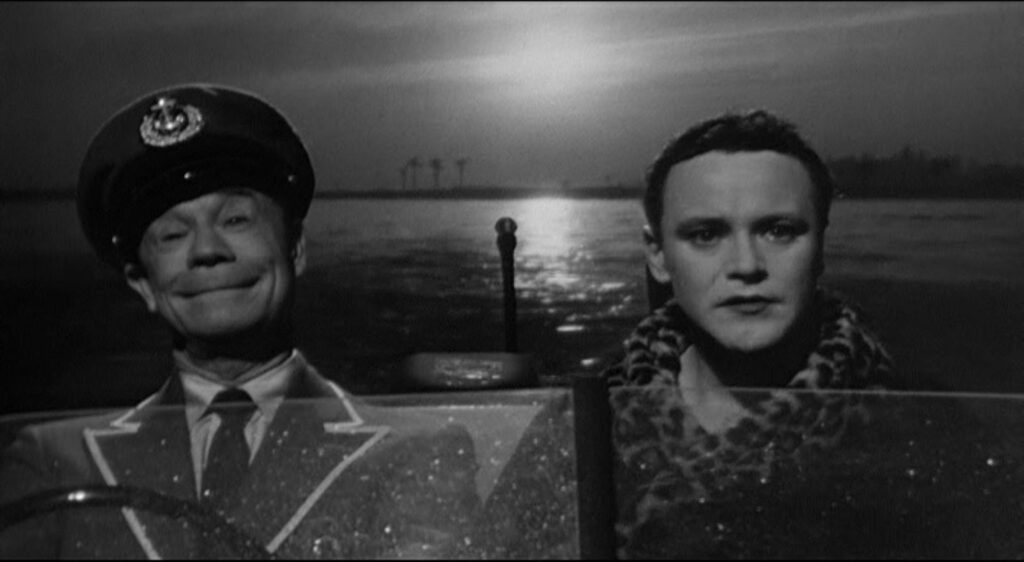
Controversy hits Some Like it Hot
The Hayes Code was still in effect in 1959. On the page, the board felt that Some Like it Hot would either come dangerously close or outright cross the line with, as they saw it, undertones of homosexuality. This came primarily from the scenes between Osgood and Daphne, but also in the scene where Joe, dressed as Josephine, kisses Sugar. Homosexuality sort of played into their next objection–crossdressing. They felt that if two men were wearing womens clothes for that length of time that they must be gay. Crossdressing and Homosexuality were seen as synonymous in the 50s. Men dressed as women had been seen in film before (including Cary Grant) but those were short term and for effect. This was almost an entire movie of it.
The charges of over-sexualization came after the film was finished. These were all related to Monroe, who was costumed to expose as much as they could get away with. Combined with everything else, the Board refused to give the film their approval certificate when they saw the final cut. The Legion of Decency (part of the Catholic Church) also condemned the movie as “immoral.” Some Like it Hot seemed doomed.
Wilder takes a stand
Wilder was determined not to be put off. He and his writing partner I.A.L. Diamond had created a well crafted screenplay and shot a perfect film. They weren’t about to have it watered down and destroyed. Wilder knew that once the public saw it they would think all of the controversy was a big nothing because they would see the true content. Wilder knew one other thing. No one was going to stay away from a Marilyn Monroe movie. No one.
Wilder took a stand and said to Hell with it and released the movie without board approval. Billy Wilder had that much power in the industry by 1959. To hell with them, they’re not stopping me.
He turned out to be 100 percent correct on all counts. Audiences saw that the allegations were a big nothing. Word got out and Some Like it Hot became one of the highest grossing movies of 1959. The public couldn’t have cared less for the most part that the movie didn’t have a Certificate. Most of all, Wilder was right–no one stayed away from a Marilyn Monroe movie.
The Legacy of Some Like it Hot
When it was released in March 1959, Some Like it Hot became a runaway success. Grossing $8 million at the box office (out performing an actual Cary Grant movie–North by Northwest–by over $2 million.) It was nominated for six Academy Awards including Best Director, Best Screenplay and Best Actor (Lemmon,) and won for its Costume Design. As predicted, most people simply didn’t care whether the Hayes Code or the Catholic Church approved or not. When word quickly got out about how good it was and that all those controversies had to be taken in context, it was all over. Today, Some Like it Hot is cited as having been a major nail in the coffin of the Hayes Code. Wilder’s next film, The Apartment, took it even further.
Film scholars and critics have consistently cited Some Like it Hot as the greatest screen comedy ever made. Sixty-one years later, it’s as new as it was in 1959. There isn’t one single smudge, awkward moment, or something to remind you that it’s from another era in the entire movie. Something only a very select few ever achieve. Movies get called “the greatest” for a reason. This one is a prime example. Don’t miss it.

